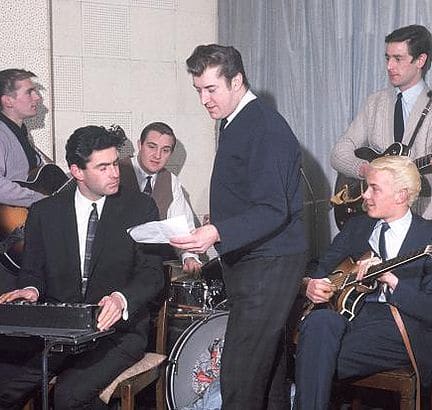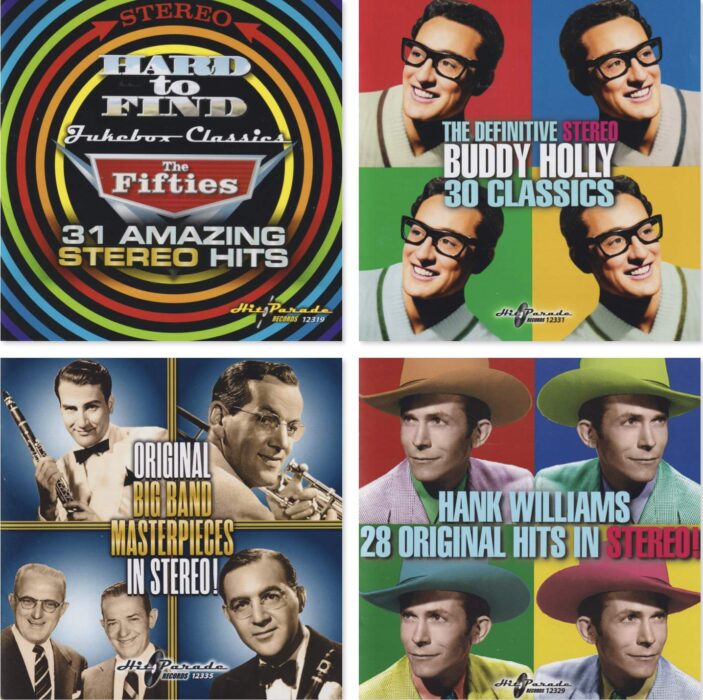The Article
Meek…Not Mild: I Hear a New World, An Outer Space Music Fantasy
23rd July 2015

It was a concept album…kinda. Possible life on the moon? Well, before we (‘we’ as humans, that is) actually landed there, it was a question that was broached on a regular basis all the way from ancient times. I Hear a New World: An Outer Space Music Fantasy, created in 1960 by Mr Joe Meek, was the latest musing on the subject. It can still be found, relatively easily, on CD today via RPM and via vinyl on the Abraxas label
Joe Meek was, essentially, an eccentric. And we breed spectacular eccentrics in Britain. Way ahead of his time, Meek was a unique character with unique talents and had an incredible and indelible influence on the UK’s music industry. As such, he is indirectly responsible for many classic albums.
Meek was a producer but, like America’s Phil Spector, another major influence on music and another eccentric, Meek was totally idiosyncratic. In fact, he has sometimes been referred to as a “mad genius”. Meek was a pioneer of studio tools and techniques in terms of multiple overdubbing, close mic-ing, sampling and more. In fact, in the studio, he had an ‘anything goes’ mentality. You’re talking highly compressed music, pianos that were played at variable speeds, sound effects that were otherworldly, echo and reverb to the extreme, ghost-like orchestral noises and more. Amazingly, Meek never used state-of-the-art equipment for these endeavours, he couldn’t afford it. His own HQ, for example, was not a gleaming, fully featured, sprawlingly staffed 6-floor section of a prized skyscraper but a few small rooms over a High St. shop, within a flat he rented there.
In some ways, Meek was early British rock’n’roll’s version of the great British boffin. Beavering away with his speakers and microphones in his Holloway Road space. Because of the available cramped conditions, Meek had to be imaginative when organising his recording sessions. So, it would not be untypical for the singer to have to leave Meek’s flat and sing his heart out while standing somewhere on the stairs, while the guitarist would be strumming in the front room and percussion would consist of someone stamping like a banshee in the bathroom. You get the general idea. This wasn’t a recording space in the style of Abbey Road. Although Meek’s skill set and imagination was larger than the Albert Hall.
If you are not familiar with Meek, you may know his work from such productions as the Tornado’s Telstar (the first British rock’n’roll record to top the American charts) and the Honeycombs’ Have I the Right but Meek produced scores of records, all of them with that Joe Meek edge. His work is highly prized and original recordings can fetch top money on the collector’s circuits.
I Hear A New World was strange. Meek pushed the technological boundaries for this release. He roped in an ex-skiffle outfit, West Five, from west London and renamed them the Blue Men to perform on this mainly instrumental “outer space music fantasy” using instruments such as the clavioline, a Hawaiian guitar, a jangly piano and then-futuristic electronic noises and sound effects.
“Meek had an unusual approach to sound. He started the album when he was contracted to the independent UK label, Triumph Records, as a showcase for stereo where stereo didn’t really exist in great numbers in the home at the time,” said Kieron Tyler A&R/Producer for RPM International for the CD reissue of the album.
“The entire concept took the form of two EPs and an album. What actually appeared, though, was one EP, Volume One of I Hear A New World, in stereo. There were only 99 copies made of this record released because, once you print more than that, it attracted the tax office and the price of the record went up. The second EP was going to come along, picture sleeves where manufactured, about 25 have escaped in the world but no vinyl was created because the label, Triumph, went bust. Of the album, test pressings were made but no artwork was created. The album included tracks from both EPs, including the missing second. There are less than 25 of those album discs created too.”
It was a big deal when, in 1991, RPM (www.cherryred.co.uk) released a CD with the complete album on it which also included a monologue from Meek, subtitled A Day In The Life alongside a video interview (accessed via computer) from an episode of ITV’s, hard-hitting, investigative journalism programme, World In Action.
“It is a deeply strange album,” said Tyler, “Meek’s liner notes explained the context plus the music on the album and talked about people who lived on the moon called Glabbots and Sarooes. On the LP, there were sonic descriptions of the sounds of the moon including the sounds of a waterfall. There were musique concrète things in there: sounds that could have been sounds of teeth running across a comb?”
Meek himself wrote the music, handled the band, produced and directed the album. He conceived the whole thing. You won’t hear Meek’s singing voice on the disc, though because, “Meek was tone deaf. He could ‘La La La’ but he sounded like a donkey when he sang,” said Tyler.
The music was licensed from Joe Meek’s niece, Sandra, who owned the acetates. There were no tapes available of the album.
Sounding like a warped version of Pink Floyd. A kind of Saucerful of Secrets from the sticks, this album is a perfect slice of Meek’s talent, skill, vision and slightly wacko genius that proved to be a watershed for future electronic music.


